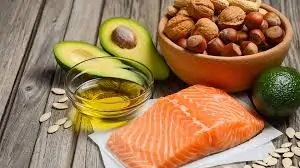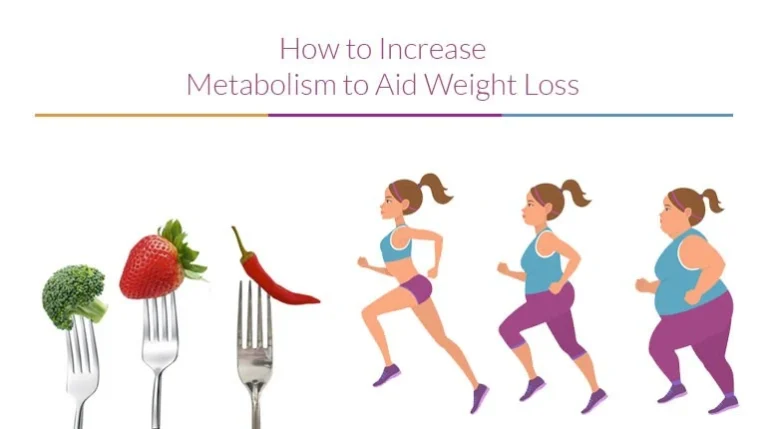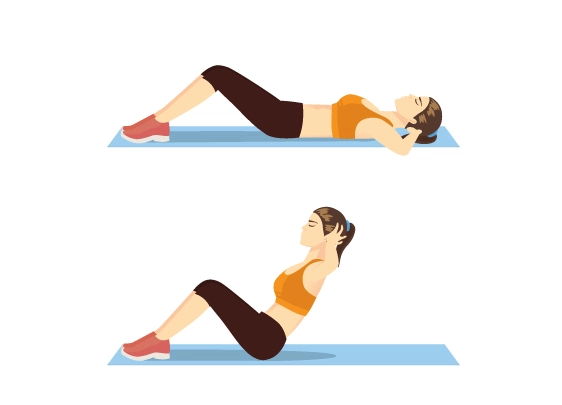Types Of Fat
Fats are a vital part of a healthy diet, serving as a source of energy and supporting bodily functions. They are classified into four main types: saturated fats, unsaturated fats, trans fats, and essential fats. Each type impacts health differently, making it important to choose fats wisely for overall well-being.
Fats: What Are They?
Fats are a necessary component of the diet and are crucial for sustaining good health, according to nutrition facts.
The phrases that the general public and health enthusiasts are most interested in are fats and cholesterol. There is a good explanation for that. In contrast to proteins and carbs, which have just four calories per gram, fat is the most concentrated source of energy in the diet, with 8 to 9 calories per gram. Carbon, hydrogen, and oxygen are the three elements known to be present in fat. Nine calories per gram, however, are produced since it contains more hydrogen and carbon than oxygen. Foods that include fats as their primary energy source are classified as lipids, which are a collection of both saturated and unsaturated fats.
The human body has two types of fats that are necessary for the body to operate properly and are derived from the food that is ingested. These lipids have a significant impact on blood coagulation, inflammation, and brain development. Adipose tissue, or fat cells, act as a storage space for the body’s excess calories, which aid in insulation. They are frequently a significant source of energy. Moreover, fats facilitate the body’s absorption and circulatory delivery of vitamins A, D, E, and K.
Types Of Fat
There are four categories of fats:
- Saturated Fat
- Monounsaturated fats
- Trans Fats
- Polyunsaturated Fats
Saturated Fat
It is the cause of poor cholesterol. Since most animal products, including cheese, milk, meat, and so on, contain them, one should restrict their intake. The component that should be substituted for saturated fats to reduce cholesterol levels is unsaturated fat. Trans fatty acids, which are obtained from vegetable oils, also contribute to elevated cholesterol levels. Because saturated fat causes cholesterol to obstruct the arteries, it is the most common cause of heart disease.
Monounsaturated fats
Monounsaturated fats are good fats that may be found in peanuts, avocados, olive oil, macadamia nuts, and oil. It is essential for heart protection and also helps with insulin sensitivity, weight reduction, fat storage, and maintaining a healthy level of energy.
Trans Fats
Unsaturated fatty acids or trans fatty acids are other names for trans fats. Many foods, including whole milk, cheese, cream, beef, lamb, and butter from cattle, naturally contain these fats. A naturally occurring trans fatty acid, conjugated linoleic acid helps to boost immunity and prevent the growth of cancer. However, when producers turn liquid oils into solid fats, the majority of trans fatty acids are produced. Hydrogenation is used to create goods such as peanut butter, margarine, vegetable shortening, and various salad dressings by hydrogenating vegetable oils. Many processed foods, including baked goods, cookies, crackers, snack foods, deep-fried meals, and other foods prepared or fried in partly hydrogenated oils, contain trans fats.
Polyunsaturated Fats
Plant and animal foods including vegetable oils, walnuts, flax seeds, salmon, and so on are rich sources of polyunsaturated fats, which are good. Both Omega 3 and Omega 6 fats are included in these fats. Omega 3 promotes healthy cell membranes, hormone levels, and inflammation reduction. The maintenance of good brain and muscular function is significantly aided by omega-6 fatty acids.
A tiny quantity of omega-6 fatty acids is required by our diet. Omega 6 fatty acids are abundant in sunflower, corn, soybean, safflower, cottonseed, and grapeseed oils. In addition to this, the majority of packaged meals like cookies, crackers, chips, and french fries, as well as baked products like bread and bakery treats, include omega-6 unstable fatty acids.
There are various forms of fat in your body, even though the term “fat” is often used to refer to total body fat.
Certain fats can harm your health and aid in the development of disease. Others are essential and helpful to your well-being.
The three primary varieties of fat cells are beige, brown, and white. It is possible to store them as visceral, subcutaneous, or vital fat.
The function of each type of fat varies. Some help maintain a healthy hormone balance and metabolism, whereas others cause serious illnesses, such as:
- Diabetes type 2
- Heart disease
- High blood pressure
- Cancer
White
The type of fat that most people think of first is white fat.
It consists of big, white cells that are kept beneath the skin or near the organs in the thighs, arms, buttocks, and abdomen. The body stores energy in these fat cells for later use.
Additionally, this kind of fat has a significant impact on how hormones like:
- estrogen
- leptin (One of the hormones that promotes hunger)
- insulin
- cortisol (a stress hormone)
- hormone of growth
A certain amount of white fat is essential for optimal health, but excessive amounts might be detrimental. The percentage of body fat that is considered healthy varies based on your level of physical activity and fitness.
The American Council on Exercise states that non-athlete men should have a total body fat percentage between 14 and 24 percent, and non-athlete women should have a percentage between 21 and 31 percent.
You run the risk of developing the following health problems if your body fat percentage is higher than is advised:
- Diabetes type 2
- Heart disease
- High blood pressure
- pregnancy problems,
- hormonal abnormalities, and stroke
- renal illness
- cancer
- liver disease
Brown
Brown fat is a form of fat that is mostly present in infants, however, adults do have some leftovers, usually in the shoulders and neck.
This kind of fat keeps you warm by burning fatty acids. Researchers are looking for strategies to increase brown fat activity to help avoid obesity.
Beige (brite)
The study of beige (or brite) fat is a relatively recent development. In terms of function, these fat cells fall midway between brown and white fat cells. Similar to brown fat, beige cells can burn fat instead of storing it.
It’s thought that specific hormones and enzymes that are released under stressful situations, cold weather, or physical activity can aid in the conversion of white fat into beige fat.
Research in this intriguing field may assist enhance healthy body fat levels and prevent obesity.
Essential fat
Simply said, essential fat is necessary for both a healthy body and your existence. You can find this fat in your:
brain, bone marrow, nerves, and organ-protecting membranes
Hormones that regulate temperature, vitamin absorption, and fertility are among those that are significantly influenced by essential fat.
The American Council on Exercise states that for men to be healthy, essential fat must make up at least 2 to 5 percent of their body composition, while for women, it must make up at least 10 to 13 percent.
Subcutaneous
The term “subcutaneous fat” describes the fat that is stored beneath the skin. The fat cells are a mix of beige, brown, and white.
Subcutaneous fat makes up the majority of our body fat. It’s the fat on your arms, stomach, thighs, and buttocks that you can pinch or squeeze.
Fitness experts estimate the proportion of total body fat by measuring subcutaneous fat with calipers.
While some subcutaneous fat is healthful and natural, too much of it can cause sensitivity and hormone imbalances.
Visceral
Although some bodily fat is good, not all fat is the same.
Visceral fat is a form of body fat found close to several important organs, such as the
intestines, stomach, and liver
Additionally, it may accumulate in the arteries.
Visceral fat is frequently called “active fat” since it can actively raise the risk of major health issues.
Visceral fat is not always present in people with some belly fat. Another name for belly fat is subcutaneous fat, which is stored directly beneath the skin.
Subcutaneous fat is more visible and is also present in the arms and legs. In reality, visceral fat is hidden inside the abdominal cavity.
Visceral fat, sometimes referred to as “belly fat,” is the white fat that surrounds all of your major organs, including the liver, kidneys, pancreas, intestines, and heart, and is stored in your abdomen.
Diabetes, heart disease, stroke, vascular disease, and some types of cancer can all be made more likely by having high levels of visceral fat.
Ways to reduce visceral fat
Visceral fat has a high sensitivity to:
- nutrition,
- exercise, and
- other lifestyle modifications that support maintaining a healthy weight
- You shed some visceral fat for every pound you drop off your weight.
Work out.
Try to work out for at least half an hour each day. Don’t forget to incorporate both strength and aerobic activities.
Cardio involves aerobic activities like:
- cycling, running, and circuit training
- It’ll burn fat more quickly.
Your muscles will gradually grow stronger and use more energy as a result of strength training, increasing your calorie expenditure.
Ideally, you should undertake weight training at least three times a week and cardio for 30 minutes five days a week.
Nutrition
Maintaining a healthy, balanced diet is also crucial.
Reduce your intake of processed, high-sugar foods as much as you can, and increase your intake of vegetables, lean meats, and complex carbohydrates like sweet potatoes, beans, and lentils.
Diets low in carbohydrates, like the ketogenic diet, may also aid in the reduction of visceral fat.
Find other strategies to lower visceral fat.
Way of Life
Reducing stress can make it simpler to reduce visceral fat because the stress hormone cortisol can increase the amount of fat your body stores.
Engage in stress-reduction techniques such as deep breathing and meditation.
Advantages
The constitution of the body is crucial. Maintaining a healthy total fat percentage will help your body perform at its peak. There are numerous advantages to having a healthy body fat percentage, including:
- control of temperature
- improved reproductive health,
- regulated hormone levels,
- sufficient vitamin stores
- healthy neural function
- a healthy metabolism
- blood sugar balance
Risks
The health effects of having too much white fat, especially visceral fat, can be detrimental. Having visceral fat can make you more susceptible to the following illnesses:
- Heart disease
- Stroke
- Coronary artery disease
- pregnancy-related complications
- atherosclerosis
- Type 2 diabetes,
- hormone imbalances,
- some types of cancer
Body fat percentage
Several techniques can be used to measure body composition.
Skinfold measurements are a widely used technique for calculating body fat percentage. A skilled specialist can assess your body fat % by pinching and measuring the folds of skin on your arms, waist, and thighs using calipers, a tool that resembles tongs.
Subcutaneous fat is mostly measured by this technique.
A gadget known as the Bod Pod is another technique. Body weight and volume ratios are used by the device to calculate the percentage of total fat during a body composition evaluation. All forms of fat in your body can theoretically be measured using this technology.
An additional technique for figuring out body fat percentage is bioelectrical impedance analysis. Athletic training facilities commonly employ it. In this test, you stand on an apparatus that measures the proportion of lean to fatty mass in your body using an electrical current.
Tests for waist circumference and body mass index (BMI) may also be useful. They give you an estimate based on your height and weight, but they don’t give you a precise proportion of body fat.
Waist circumference is a measurement of the smallest portion of the waist, whereas BMI is determined by dividing weight by height.
The National Institutes of Health (NIH) defines obesity as having a body mass index (BMI) of 30 or higher, and overweight as having a BMI of 25 or higher.
Given that visceral fat may be present, a waist circumference of more than 35 inches for women and 40 inches for males is seen as a higher risk for disease.
Fat and diet
An excessive amount of body fat is often assumed to be the result of a high-fat diet. This is just partially accurate. People need a particular amount of dietary fat for good health, even though fat has more calories than protein or carbs.
Weight gain can also result from refined, processed foods that are poor in fiber and heavy in carbs. Visceral fat is more harmful as a predictor of disease than subcutaneous fat, and those who eat a lot of processed foods and refined sweets are frequently more likely to have it.
Consumed calories that the body doesn’t require will be stored as fat. The key to weight gain or loss is not whether calories come from fat, carbohydrates, or protein, but rather how many calories you consume overall compared to how many calories you burn each day.
Moderate portion sizes and a diet rich in fiber, complex carbs, and protein are advised by the majority of specialists. The best results from a nutritious diet come from a consistent workout regimen.
Building lean muscle mass, boosting metabolism, and avoiding long-term fat gain are all made possible by strength training in particular.
FAQs
What are the 3 main types of fats?
Foods include four main types of dietary fats:
saturated fats.
trans fats.
fats that are not saturated.
polyunsaturated fats.
Which are the best fats?
Limit meals heavy in saturated fat, steer clear of “bad” trans fat, and choose foods with “good” unsaturated fats. The risk of illness is reduced by “good” unsaturated fats, such as monounsaturated and polyunsaturated fats. Vegetable oils (olive, canola, sunflower, soy, and maize), nuts, seeds, and seafood are foods that are rich in healthy fats.
What are 3 sources of plant fat?
Generally speaking, plant-based fat sources are low in saturated fats and high in unsaturated fats. Avocados, nuts and butter, seeds, and olive oil are a few examples of this.
What are the 3 main sources of fat?
meats that are high in fat. full-fat cheese, butter, cream, and milk. most baked goods produced commercially (such as biscuits and pastries)
How much body fat is good?
For women, a healthy body fat range is 25–31%, while for males, it is 18–24%; neither age nor physical ability are taken into account. Edgemon advises examining both your BMI and body fat percentage to ascertain whether you are an appropriate weight.
References:
- Gotter, A. (2021, January 31). Visceral fat. Healthline. https://www.healthline.com/health/visceral-fat#when-to-see-your-doctor
- Admin. (2022, September 20). Importance of Fats – Types of Fats, Sources and its Benefits. BYJUS. https://byjus.com/biology/fats/








One Comment